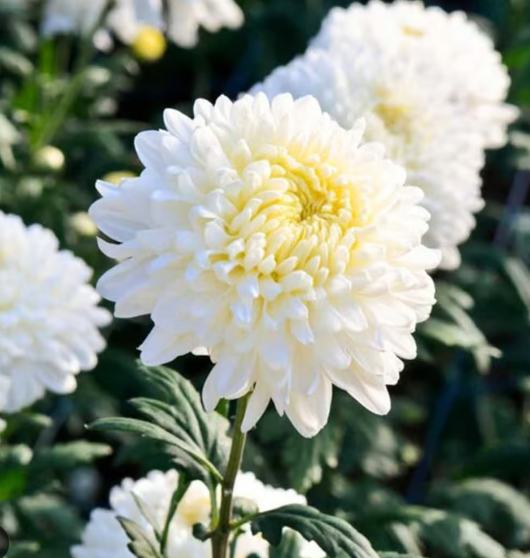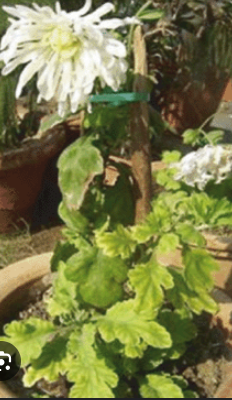Chrysanthemum Plant
Chrysanthemum (Chrysanthemum morifolium) is a perennial that grows 1-3 ft tall, hardy in USDA Zones 5-9, prefers well-drained, loamy soil, full sun to part shade, medium moisture, is not edible, and has medicinal uses.

Habit
Clump-forming
Height
1-3 ft
Growth
Perennial
Soil
Well-drained, loamy soil
Shade
Full Sun
Moisture
Low
Edible
Yes
Medicinal
Yes
Origin
Asia, Europe
Climatic Condition
Temperate
Temperature (°)
10-25°C
Humidity (%)
50-80%
Potting media
Peat, compost
Fertilizers
High phosphorus, potassium
Watering
Moderate watering
Plant Weight
Yes
Flowering Time
Autumn to Winter
Soil Ph level
6.0 - 7.0
Water Ph level
6.0 - 7.0
Soil EC
1-2 dS/m
Yeild Per Plant
Ornamental, Medicinal
NPK ratio
10:10:10
life Span
Annual/Perennial
Health Benefits
Anti-inflammatory, stress relief
Suggested Grow Media or Potting Mix ?
40% compost, 30% peat moss, 30% perlite
Suggested Fertigation/Fertilizers
Fertilize every 2 weeks with a balanced, water-soluble fertilizer.
Common Diseases and Remedies
Powdery Mildew, Gray Mold, Leaf Spot, Aphids, Root Rot.
White powdery growth on leaves Gray, fuzzy mold on leaves and flowers Brown or black spots on leaves Yellowing leaves, sticky residue on leaves Wilting, yellowing leaves, root discoloration
Neem oil, baking soda spray Improve air circulation, remove affected parts Remove infected leaves, use compost tea spray Insecticidal soap, ladybugs Improve soil drainage, use beneficial soil microbes
Sulfur-based fungicides, Iprodione or thiophanate-methyl, Copper-based fungicides, Insecticides containing imidacloprid, Fungicides with metalaxyl or mefenoxam.
HEALTH BENEFITS
· Chrysanthemum tea is known for its cooling effects, helping reduce body heat and fever.
· Rich in antioxidants, beneficial for skin health and reducing oxidative stress.
· May aid digestion and support liver health.

